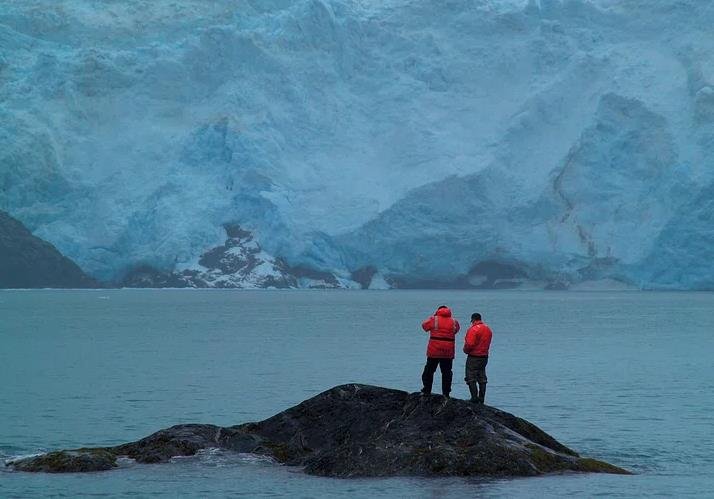The rapid melting of glaciers due to climate change is transforming some of the world’s most popular tourist destinations into hazardous zones. As temperatures rise, glaciers are receding at an alarming rate, leading to unstable landscapes and increased risks for visitors. This phenomenon, often referred to as “last chance tourism,” is driving more people to visit these fragile sites before they disappear, inadvertently putting themselves in danger. The situation calls for urgent measures to ensure the safety of tourists while preserving these natural wonders.

The Rise of Last Chance Tourism
Last chance tourism is a growing trend where travelers rush to see endangered natural sites before they vanish. This trend is particularly evident in regions with rapidly melting glaciers, such as Iceland and the Canadian Rockies. Tourists are drawn to the unique beauty and adventure these locations offer, but the accelerating glacier melt is making these areas increasingly dangerous.
In Iceland, for example, the Vatnajökull National Park has seen a surge in visitors eager to explore its ice caves and glaciers. However, the melting ice has led to unpredictable conditions, including collapsing ice caves and unstable terrain. Last month, a tragic incident occurred when an ice cave collapsed, resulting in the death of an American tourist and injuries to his companion. This incident highlights the urgent need for better safety measures and awareness among tourists.
Similarly, in the Canadian Rockies, tour operators are constantly adapting their routes due to changing glacier conditions. The Athabasca Glacier in Alberta, a popular tourist spot, requires frequent rerouting of trails to ensure visitor safety. The melting ice not only alters the landscape but also increases the risk of rockfalls and other hazards.
The Impact of Climate Change on Glacier Tourism
Climate change is the primary driver behind the melting of glaciers, and its impact on tourism is profound. Rising temperatures are causing glaciers to recede at unprecedented rates, transforming once-stable environments into perilous landscapes. This has significant implications for the tourism industry, which must now navigate the challenges posed by these changes.
Tour operators in glacier regions are facing increased operational difficulties. The unpredictability of glacier melt means that traditional routes and attractions are no longer safe or accessible. In response, many operators are investing in new safety measures, such as installing guardrails, revamping hiking paths, and providing detailed safety briefings to tourists. Despite these efforts, the inherent risks associated with glacier tourism remain high.
The economic impact of melting glaciers on tourism cannot be overlooked. Regions that rely heavily on glacier tourism are experiencing fluctuations in visitor numbers and revenue. The need for constant adaptation and investment in safety measures adds to the financial burden on tour operators and local communities. However, the priority remains ensuring the safety of tourists while preserving the natural beauty of these sites.
Preserving Natural Wonders and Ensuring Safety
Addressing the challenges posed by melting glaciers requires a multifaceted approach. Governments, tour operators, and environmental organizations must collaborate to develop strategies that balance tourism with conservation and safety. This includes implementing stricter regulations, enhancing safety protocols, and raising awareness about the risks associated with glacier tourism.
Education plays a crucial role in ensuring the safety of tourists. Visitors must be informed about the potential dangers and the importance of following safety guidelines. Tour operators can provide comprehensive briefings and equip tourists with the necessary gear to navigate glacier environments safely. Additionally, promoting responsible tourism practices can help mitigate the impact on these fragile ecosystems.
Conservation efforts are equally important in preserving the natural wonders of glacier regions. Protecting these areas from further degradation requires a commitment to reducing carbon emissions and combating climate change. By addressing the root causes of glacier melt, we can work towards a sustainable future where these magnificent landscapes can be enjoyed by future generations.
















